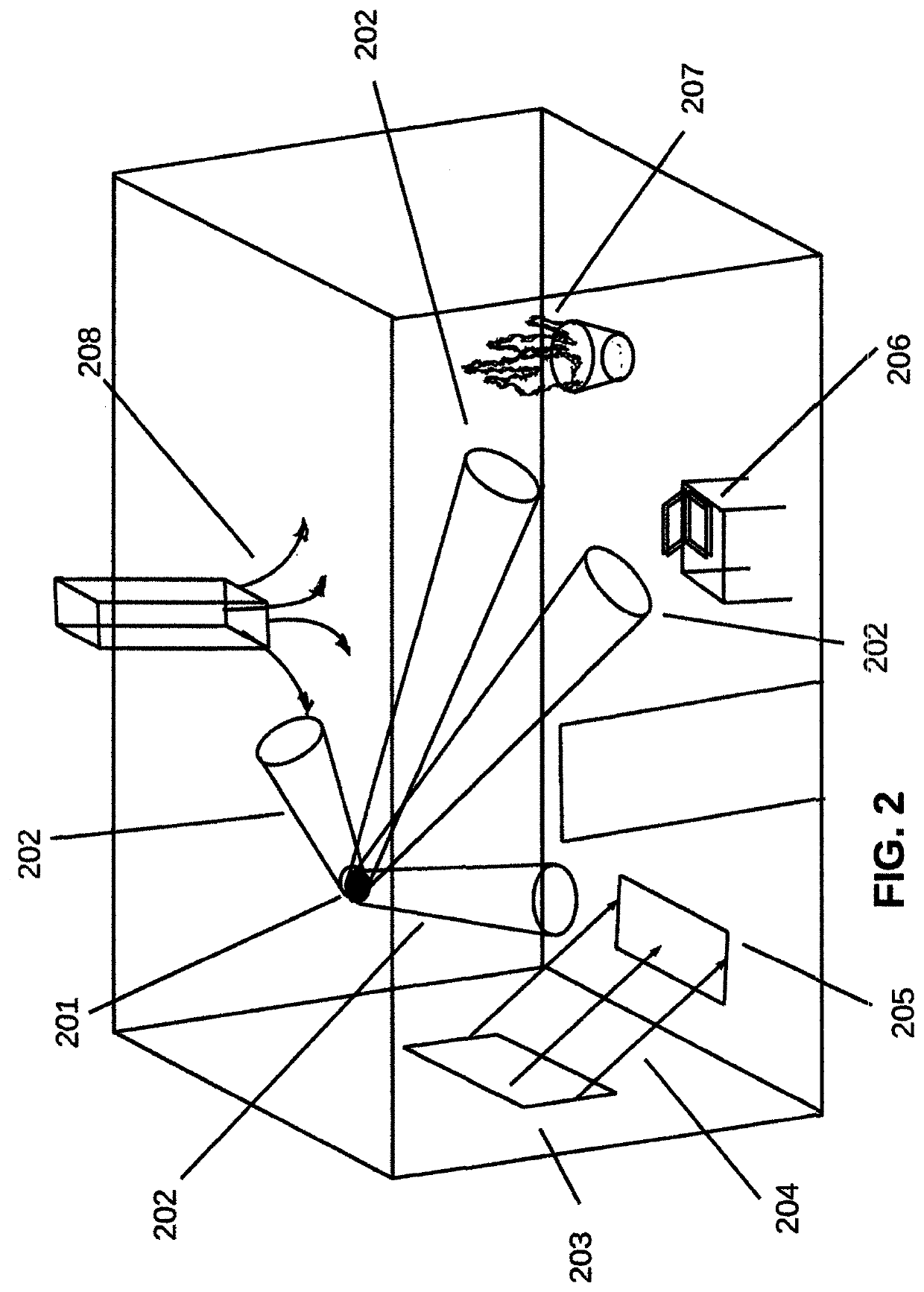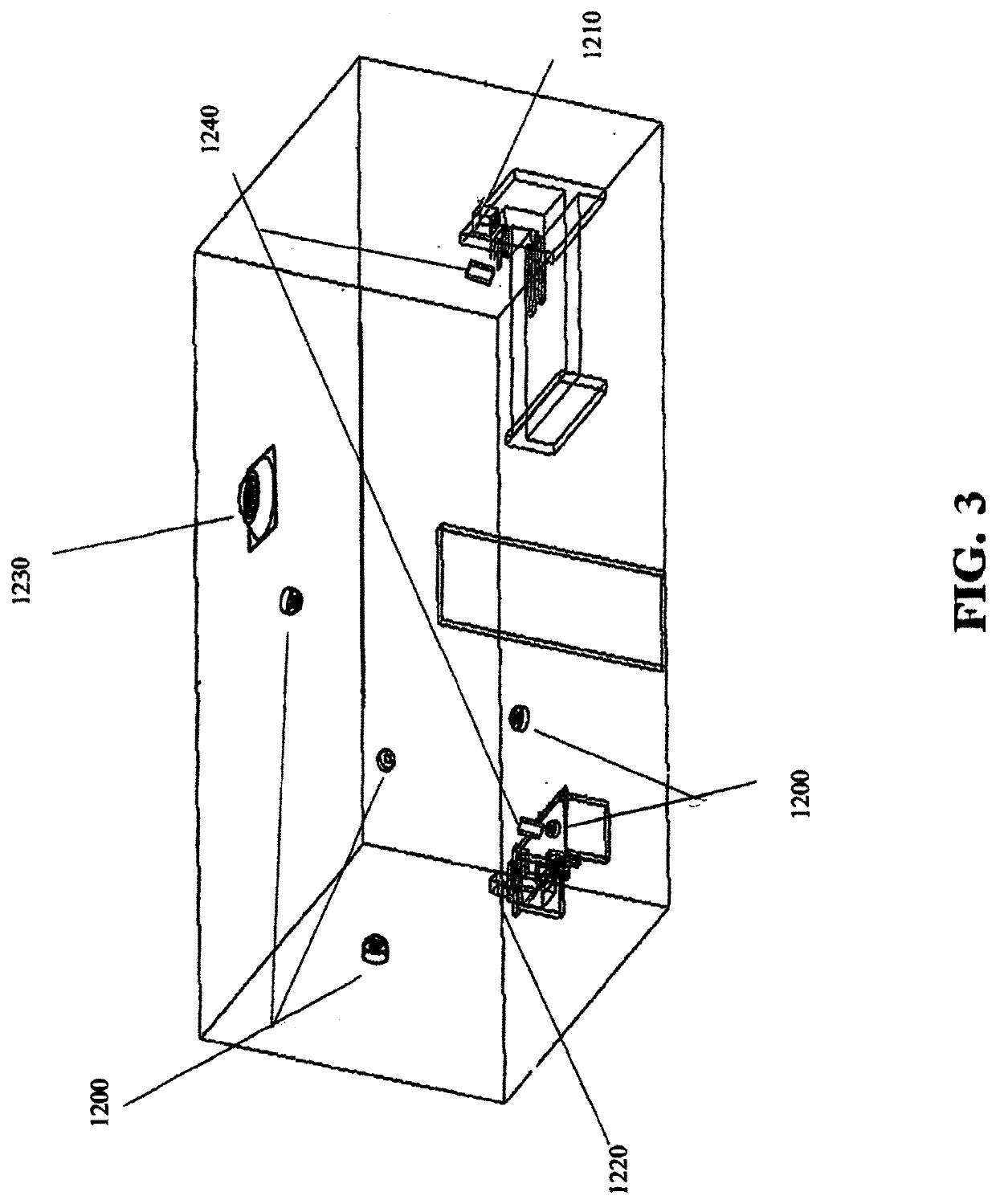Method for environmental analysis and control of spatial areas
a spatial area and environmental analysis technology, applied in the field of spatial area environmental analysis and control, can solve the problems of absolute and fixed number, not “smart", etc., and achieve the effect of facilitating bidirectional communication with the user, enhancing thermal analysis, and acceptable thermal control level
- Summary
- Abstract
- Description
- Claims
- Application Information
AI Technical Summary
Benefits of technology
Problems solved by technology
Method used
Image
Examples
Embodiment Construction
[0023]While describing the invention and its embodiments, various terms will be used for the sake of clarity. These terms are intended to not only include the recited embodiments, but also all equivalents that perform substantially the same function, in substantially the same manner to achieve the same result.
[0024]Now referring to FIG. 1 which discloses a preferred location for a multi-pixel, multi-spectral infrared radiation sensor, positioned in a housing for conditioned fluid flow passage, referenced by numeral 100 scanning infrared radiation in spatial areas. The entire room can be scanned as a single spatial area or sub-divided into smaller spatial areas. Spatial area locations are reference by numerals 160 and 170.
[0025]Now referring to FIG. 2 which discloses a location of a multi-pixel, multi-spectral infrared radiation sensor referenced by numeral 201 positioned on a wall to measure infrared radiation in one or more spatial areas. The infrared radiation sensor is directed t...
PUM
 Login to View More
Login to View More Abstract
Description
Claims
Application Information
 Login to View More
Login to View More - R&D
- Intellectual Property
- Life Sciences
- Materials
- Tech Scout
- Unparalleled Data Quality
- Higher Quality Content
- 60% Fewer Hallucinations
Browse by: Latest US Patents, China's latest patents, Technical Efficacy Thesaurus, Application Domain, Technology Topic, Popular Technical Reports.
© 2025 PatSnap. All rights reserved.Legal|Privacy policy|Modern Slavery Act Transparency Statement|Sitemap|About US| Contact US: help@patsnap.com



